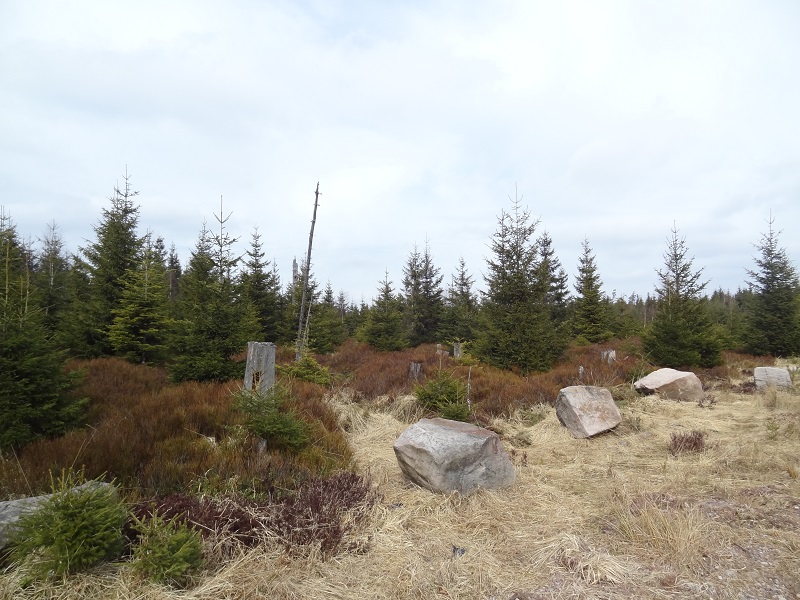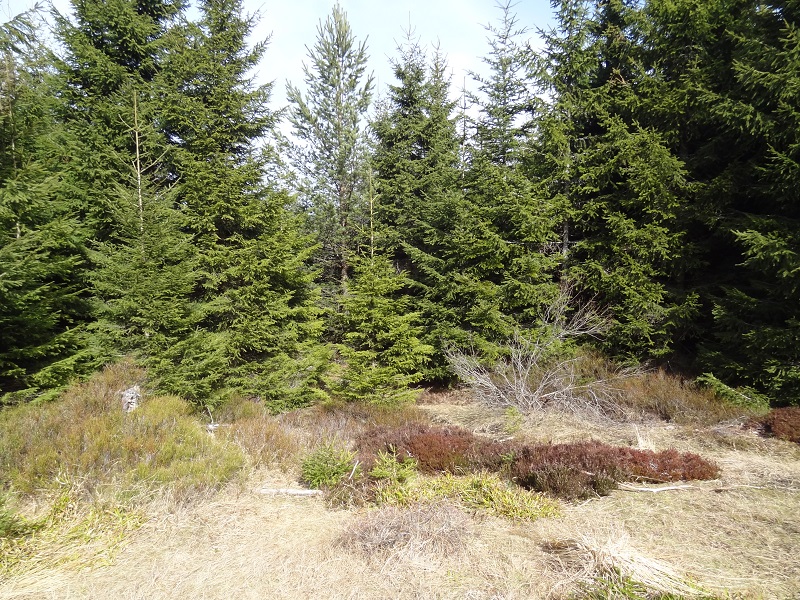Today I made an excursion to the northern Black Forest, with a vague hope to see a common European adder (Vipera berus). This is one of the few remaining areas here around which still has a somewhat bigger population of this snake. The temperature was still comparably low, and there was even still some snow, but enough sun to speculate that some adders could be already around. The European adder is the only snake which even occurs north of the northern polar circle, and they leave their hibernation dens already early in the year.
In some populations, melanistic specimens occur comparably frequently, especially in areas with lower temperatures or in bogs. In some populations up to 95% of the adders are black. In German, those melanistic specimens are regionally called „Höllenotter“, what translates to „hell adder“.
Admittedly, I had never the luck to see any common European Adder in the wild before. I already visited the very same area already two years ago, but without any intention to look in particular for snakes, and there are not that much more potential habitats for them here around. But this time I really searched for them, looked for potential places where they could dwell and visited certain possibly more promising places even for several times. Suddenly I discovered something dark in the grass, not even far away from the path on which I walked, and I saw immediately that it was a black hell adder.

Melanistic common European adder, Photo by Markus Bühler
This jet-black snake was just beautiful, it looked like something carved from obsidian.

I could observe it for quite some time from very close distance before it slithered away.

It was around 50 cm in length, what´s around in the lower average size for adult common adders.

There was of course a lot of luck involved to see this hell adder, and despite intense searching, I couldn´t find a single additional specimen in the hours afterwards. But anyway, this was still a fantastic find for me, and also a good reason for further adder excursions.
Here is a photo taken not far away from the place where I found the adder:

This is not exactly the classical deep Black Forest with big old trees and wet moss all around, but an area dominated by younger trees and smaller open areas with heather and grasses. That´s important, because the common European adder is not really a forest-dwelling snake, but dependent on sunlight which it finds mainly on the edges of forests, swathes or other places where the trees are thin enough.


Congrats Markus, that’s an extremely difficult find!
Beautiful, nicht beautyful…;)
Das war jetzt aber echt peinlich… ist korrigiert.